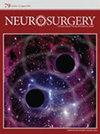传统双生长棒与根尖控制技术治疗早发脊柱侧凸的疗效:与仅使用传统双生长棒治疗的患者毕业后至少两年随访结果的比较。
IF 3.9
2区 医学
Q1 CLINICAL NEUROLOGY
引用次数: 0
摘要
背景和目的传统的双生长棒(TDGR)矫正可能不足以治疗严重和僵硬的脊柱畸形。理论上,TDGR 与根尖控制技术(ACT)相结合可改善曲线矫正效果并降低机械并发症的发生率。然而,TDGR结合ACT的长期效果并不理想。本研究的目的是回顾性分析和比较TDGR结合或不结合ACT的患者的疗效。方法入选患者均接受过TDGR结合或不结合ACT的治疗,并在毕业后进行了至少2年的随访。根据对心尖的干预,患者被进一步分为 TDGR 组、TDGR + 心尖控制椎弓根螺钉组(无心尖融合)和 TDGR + 混合技术组。结果共有 76 例患者入组(TDGR 组 51 例,根尖控制椎弓根螺钉组 10 例,混合技术组 15 例)。与 TDGR 相比,TDGR + ACT 能更好地矫正主曲线,更好地控制椎体顶端的平移和旋转,降低并发症和翻修手术的发生率(P < .05),同时保持脊柱和胸部的发育。虽然差异不显著,但 TDGR + ACT 组患者在最后一次随访时的肺功能更好(P > .05)。结论与 TDGR 相比,TDGR + ACT 可在保持脊柱和胸部发育的同时,获得更好的曲线矫正和根尖控制效果以及可比的临床结果。患者可从 TDGR + ACT 治疗中获得更多益处,包括更低的机械并发症和翻修手术发生率、更好的肺功能以及避免最终融合。本文章由计算机程序翻译,如有差异,请以英文原文为准。
Outcomes of Traditional Dual Growing Rods With Apical Control Techniques for the Treatment of Early-Onset Scoliosis: Comparison With Patients Treated With Traditional Dual Growing Rods Only With a Minimum 2-Year Follow-up After Graduation.
BACKGROUND AND OBJECTIVES
Correction with traditional dual growing rods (TDGR) might not be sufficient for severe and rigid spinal deformity. TDGR combines with apical control techniques (ACT) could theoretically improve curve correction and decrease the incidence of mechanical complications. However, long-term results for TDGR with ACT are limited. The aim of this study was to retrospectively review and compare the outcomes of patients who graduated from TDGR with or without ACT.
METHODS
Patients who were treated by TDGR with or without ACT with a minimum 2-year follow-up after graduation were enrolled. According to the intervention for the apex, patients were further divided into the TDGR group, the TDGR + apical control pedicle screws group (without apical fusion), and the TDGR + hybrid technique group. Clinical outcomes, radiological parameters, pulmonary function, and complications were compared among the 3 groups.
RESULTS
A total of 76 patients (51 patients in the TDGR group, 10 patients in the apical control pedicle screws group, and 15 patients in the hybrid technique group) were enrolled. Compared with TDGR, TDGR + ACT achieved better main curve correction, better control of apical vertebral translation and rotation, and lower incidence of complications and revision surgery (P < .05) while maintaining development of the spine and chest. Although the difference was not significant, patients in the TDGR + ACT group had better pulmonary function at the last follow-up (P > .05). The percentage of patients receiving final fusion in the TDGR + ACT group was significantly lower than that in the TDGR group (P < .05).
CONCLUSION
Compared with TDGR, TDGR + ACT can achieve better curve correction and apical control and comparable clinical outcomes while maintaining the growth of the spine and chest. Patients may derive more benefits from treatment with TDGR + ACT, including a lower incidence of mechanical complications and revision surgery, better pulmonary function, and the avoidance of final fusion.
求助全文
通过发布文献求助,成功后即可免费获取论文全文。
去求助
来源期刊

Neurosurgery
医学-临床神经学
CiteScore
8.20
自引率
6.20%
发文量
898
审稿时长
2-4 weeks
期刊介绍:
Neurosurgery, the official journal of the Congress of Neurological Surgeons, publishes research on clinical and experimental neurosurgery covering the very latest developments in science, technology, and medicine. For professionals aware of the rapid pace of developments in the field, this journal is nothing short of indispensable as the most complete window on the contemporary field of neurosurgery.
Neurosurgery is the fastest-growing journal in the field, with a worldwide reputation for reliable coverage delivered with a fresh and dynamic outlook.
 求助内容:
求助内容: 应助结果提醒方式:
应助结果提醒方式:


